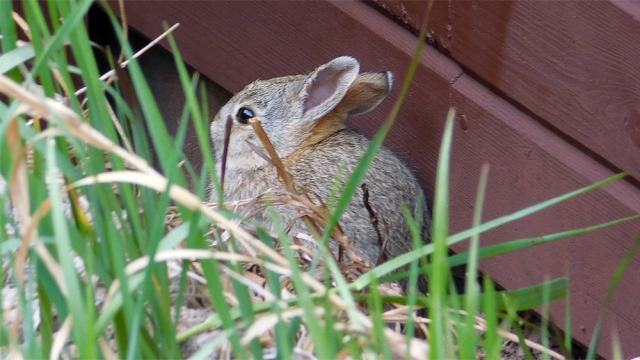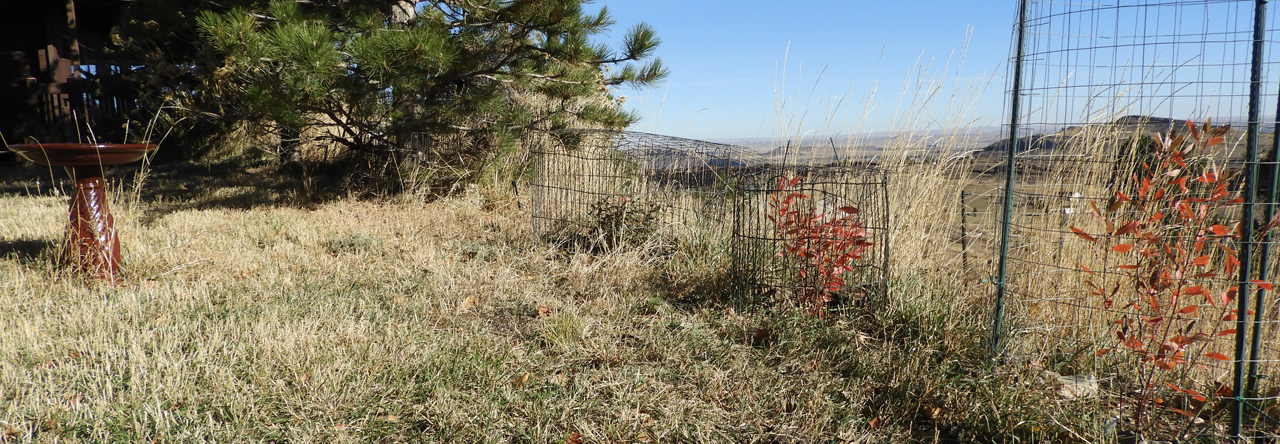Everyone should have their own cottontail. Not the tail per se — though that would make business meetings a lot more interesting— but the rabbit with the tail. Luckily we have one, the Mountain Cottontail (Sylvilagus nuttallii), one of nine cottontail species found in the U.S. and Canada. They occupy a range in the intermountain west up to and just beyond the border with Canada, beginning on the eastern boundary of their range pretty much where the more abundant Eastern Cottontail ends. Although they tend to hole up in bad weather, lately a single large rabbit has been a fixture in front of the garage in the mornings, preferring the gravel in broad daylight, and then moving to the grass beneath the apple tree, or down on the horseshoe pitch in the evenings, where it spends roughly half its time feeding close to the thicket.

All cottontails have a similar gray-brown coloring, but you’d swear they’d adjusted their camouflage to precisely mimic the three-quarter-inch river rock that covers our driveway, which has improved their odds with the circling Red-tailed Hawks or the Great Horned Owls that sit on the power line at the bend in the road above the house. The sad fact is, rabbits are essentially nature’s snackin’ cake: only about 15% make it through the first year and very few last more than a year and a half. Every common foothills predator, from bobcats to coyotes to prairie rattlers, is a threat.
To counter the threat they feed in low-light, near shrubs, and have developed patently insane flight strategies. The last half million years of bunny evolution, though, has left them ill-equipped to expect a near-sighted Subaru Outback driver late on a weeknight evening. Panic ensues. The rabbit gets scared, too, and the usual instincts kick in. He practices the DARE method: Deny, Avoid, Repeat, and Evade. He runs at least four feet down the drive. Freezes. Backs up, sprints in a zig-zag motion directly at the Subaru, and then disappears into the bushes just beyond sight of the driver.
“I don’t see him,” says the driver. “Is he still there?”
“I think it’s a she,” I say. “Females are up to five percent larger than males. That’s a big one.”
My experience has been that important information like this is unwelcome when, within sight of the house, it can take half an hour of concerned rabbit wrangling to travel the last forty feet.
Mountain Cottontails don’t actually dig their own burrows, and with the exception of the young born in the shop annex — where God knows what lives — all of them live under the house, gaining entry through a cavity directly below the front stair. Between the unusual security of that burrow, rabbity river rock, and what you’d politely call my lackadaisical approach to landscaping, I like to think our guys have a better shot than most.

